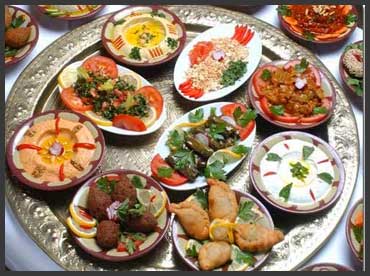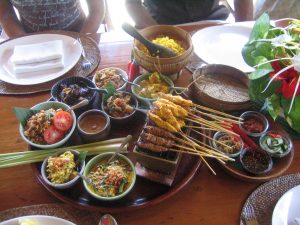
Food has always been a core element of tourism. Consumption is an integral aspect of the tourist’s experience. A tourist consumes not only the sights and sounds, but also the taste of a place. Food occupies a significant place in the itinerary. Nearly, all tourists eat and dine out. Food gives us an insight in other’s culture as it allows us to experience a new sensory delight. Local food is a fundamental component of a destination’s trait, adding to the range of attractions and the overall sightseeing experience. Local cuisine therefore is an essential constituent of tourism industry.T
Today’s tourist is knowledgeable, more cultured, well travelled and is all out for new experiences. Food offers a gateway into other cultures, through taste, through food preparation and the whole eating atmosphere. Food and beverages provide lasting memories that define a holiday or travel experience. The tangible aspects of food provide knowledge base into religion, traditions, customs and history of other places.
Food tourism consists of visiting a destination with core purpose of tasting food of a state. It involves participating in festivities, visiting restaurants, visiting food festivals, cooking competitions, food stores, food events, countryside food, cookery classes, films, rum and wine tours and other similar ways of all sorts to physically experience the cuisine. The local communities today have a very important voice in the way in which tourism is developed; they appreciate when governments make strategies which maintains ecological balance, harnesses natural resources while allows the locals to foster their distinctiveness. It consists of facets such as visit to winery and brewery, food manufacturing plants, conferences and events with culinary professionals and cookbook authors, and ethnic food tastings. For example, Europe’s varied cuisine has helped in making it as one of the favorites in UNESCO World Heritage list and playing a central role in the travel industry. This credit obviously goes to its food culture.

A research suggests that high percentage of travelers, travel different destinations in the world only to taste variety of cuisines. Though this stimuli is innately expressed by most. Because of food fanatics many travel detonations have gained popularity; for them food is a symphony of flavor, color, balanced ingredients and contour. Tourism researches around the world show that there is a strong connection between tourism and gastronomy. However, there is little empirical evidence, to show, the existence of food tourism. In fact food attracts travelers to the same destination to savor its unique gastronomy.
Travelers interested in cooking and eating, sampling wine and beer, cooking, baking and learning about the history of certain foods can choose to visit variety of destinations in world. I am sure, travel and tourism companies can design unique culinary tourism packages. French food lovers may consider cooking classes in Paris or attending a French cooking school as a guest. Italy, Spain and other countries in the Mediterranean offer farmhouse cooking vacations, where visitors can live in a farmhouse or villa for an extended period of time and learn about local and regional cuisine.
Travel and tourism industry is global, highly competitive, unstable and competitive in nature. It requires continuous research and market intelligence. It necessitates anticipating changes, being always prepared in the managing it. While we know that the tourism industry is perennially volatile, the facet of food perhaps could play an important role in strengthening the industry.

Indian cuisine has been attracting tourists from all over the world for its most assorted cuisines. The Indian food served in restaurants worldwide is North Indian, known as Mughlai or Punjabi. Indian food has evolved over thousands of years; it has absorbed various influences of invaders such as British, Portuguese, Muslims and French. Yet has it has held its own flavor. Indian cooking has honed perfection of blending spices which have medicinal values; they are used for additional aroma and flavors. A traditional Indian meal comprises vitamins, carbohydrates, proteins, fats, fiber everything you need for a healthy lifestyle. It includes an assortment of fresh vegetables and fruits cooked in a multitude of ways that help retain their freshness and nutrients. The foods are mostly vegetarian, but many include lamb, goat, chicken meat and even fish. Indian cuisine is usually very spicy. Meals are usually eaten without cutlery, while seated on the floor, but these traditions have changed due to the restaurants leaning towards the Europe or the US culture.
We have not deliberated a thought about developing food tourism yet. The diverse cultures and traditions have a good scope in India to widen the food destinations. The country’s culinary traditions are garnering increasing international attention. Reality shows on the televisions such as ‘Master Chef India’ which commemorates people who make great food, ‘Khana Khazana’, ‘Zaika India ka’, Kunal Vijaykar’s show ‘The Foodie’ and many more gourmet programs have enthused millions of people to cook food and the participants on the show have great fan following. These shows have transitioned the most mundane, everyday chore of cooking into a life changing experience. Shows like this have a great impact on the origin of the dish. I think the travel and tourism businesses could work out strategies in association with such shows.

Eating and dining etiquette throughout the country differs. The traditional Indian way of eating is on the floor, sitting cross legged in a circle with the food placed in the center. Indian meals are simple yet varied. Food is respected and treated divinely. “Atithi devo bhavah” which means that ‘The guest is God’ describes the host-guest relationship. It has become the tag line of Indian Ministry of Tourism’s campaign to improve the treatment and experience of tourists in India. I wish to list below some famous tourist destinations which are also famous for culinary cause.
New Delhi, the Capital offers delicious street food including variations of fresh bhel, chaat, samosas, wadas. Food culture in Delhi is a mixture of North Indian food, Mughlai Cuisines. Delhi is famous for Punjabi food and mouth watering street food. Delhi has good dhabas for sit-down meals and variety of cafes and restaurants for all budgets. In Hyderabad you will savor culinary traditions passed down from the Nizam monarchy. The Masalas or the rich blend of herbs, spices and condiments give the dishes a base, or what is popularly known as “Gravy”. Some of these blends are well-kept secrets still. This is the only destination in India where you’ll find authentic Arabic, Turkish and Mughlai cuisines. The city is famous for its rich, aromatic biryani made with lamb, chicken or vegetables and served with fragrant basmati rice.
For sea food fanatics Goa is the right destination. The Goans will pamper you with its wide varieties of sea foods. Fish and prawn curries, variety of fish like kingfish, pomfret, tuna and shark dominate the list of local delicacies along with spicy pork, chicken curries and a wide range of regional vegetarian thalis. Jaipur, India’s Pink city has preserved its own food tradition. This city’s culinary tradition is pampering guests with full thali consisting of dal batti, churma, bajre ki roti and chapattis, mishri mawa, kalakand and ghewar. The markets are home to an abundance of food stalls. Some of Mumbai’s streets are famous for foods such as pav-bhaji, kababs, vada-pav, chiken tikka, pani puri, shev puri. Khau galli and Mohammed Ali Road during Eid festivals are world famous for attracting foodies.

According to the International Culinary Tourism Association, which is renamed as Word Food Travel Association (WFTA) culinary tourism is growing exponentially every year. The WFTA claims to be the world’s largest food tourism trade group, with more than 18,000 members in 135 countries. The association’s focal points are education and research, product development, and marketing.
The basic problem in food tourism is that the destinations are poorly packaged. It requires some imagination, little deliberation and putting food in the right viewpoint to make it big. Marketers out there need to revise the value chain of food tourism with a fresh approach.













































